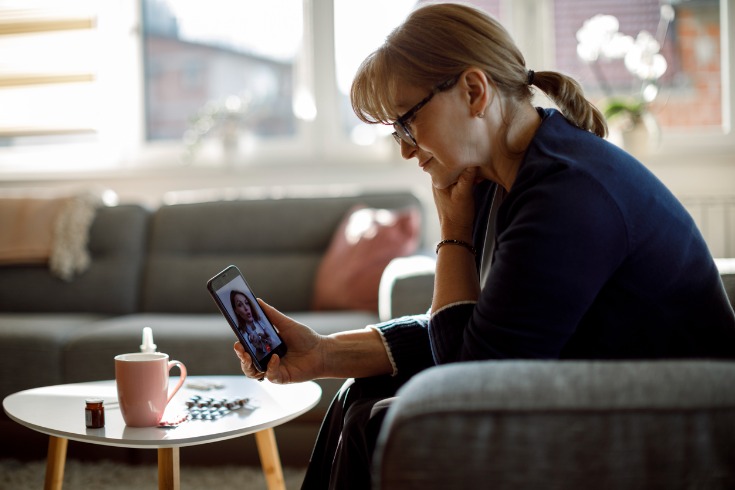
Telehealth appointments have kept patients and healthcare providers safe during the pandemic. The virtual appointments have also allowed more patients to book and attend appointments they need the most.
Long Waiting Times for Health Appointments
Australia’s largest healthcare booking service, HealthEngine, has reported that waiting times for a GP had increased to an average of four days in May 2022, compared to 2.5 days in 2019 in NSW. Every state (Northern Territory and Tasmania not included due to a small sample size) has seen increases in wait times.
Wait times for medical appointments are at their highest in Australia. Some doctors and health professionals are reporting longer waiting lists than at any other time in their career. Elective surgeries for a range of health conditions were cancelled during lockdowns and it’s hard for hospitals to catch up with new cases and staff shortages.
Mental Health Appointments
COVID-19 has had a big impact on mental illness. For more than two years, the pandemic has increased people’s stress and anxiety levels. Many Australians are seeking mental health support services for the first time. The increased numbers are putting a strain on the limited number of psychologists.
In 2021, one in five psychologists reported they could not take on any new patients. Just a year later, that number is now one in three. According to the Australian Psychological Society, only one in 100 psychologists had closed their books to new patients before the pandemic. Even when new patients can find a psychologist that is willing to take them on, their first appointment is often a three-to-six-month-long wait. In the meantime, their mental health continues to decline and their recovery is longer than if they had earlier access.
Who Can Use Telehealth Appointments?
Patients can see a range of healthcare providers via telehealth, including:
Telehealth is useful for many conditions or concerns, but there are times when doctors and healthcare professionals need to see their patient in person. Not all health professionals can assess their clients virtually. They may need to treat an injury or wound, give an injection or provide intravenous medications. However, for other forms of treatment that are ‘hands-off’, telehealth is a good option.
Not everyone is eligible for telehealth appointments. Patients must have seen a GP in the same clinic face-to-face in the last 12 months to have a telehealth consultation, unless they’re isolating. Electronic prescription of medications is also available.
Telehealth is Helping Bring Down Wait Times
Psychologists can also provide patients with appointments over telehealth. Using live video and audio to consult has its positives for both the healthcare provider and patient.
Psychologists are able to work from home rather than commute to their clinic when providing telehealth appointments. The time they used to spend travelling to and from work may allow them to make another two appointments per day or 10 per week. That’s 10 people who would otherwise be on the waiting list.
Isolating? Telehealth Appointments Can Go Ahead
Like everyone in the community, psychologists are at risk of being infected with COVID-19 and all the other viruses that are circulating. If they’re infectious, they can’t come into the clinic and risk passing on a virus to their colleagues and patients, so they stay home to isolate themselves. All of the patients they would have seen in a week then need to be rescheduled, pushing out waitlists even further. Although, if they’re well enough to keep working from home using telehealth technology, their week’s worth of patients get to keep their appointments.
Patients are also getting sick and having to cancel their face-to-face appointments, sometimes with less than 24 hours’ notice. With little time to reschedule an in-clinic appointment, the appointment may be lost. However, patients can keep their appointment if it’s via telehealth.
Telehealth is Removing the Travel Barrier
With no time needed to commute to an appointment, patients are more likely to keep their appointments. They don’t need to leave work early or miss out on family time to attend a clinic; all they need is a quiet room or even their car if they’re at work.
With more healthcare providers now offering telehealth appointments, people in rural areas are able to have more choice in who they can make an appointment with. They don’t have to drive to the next suburb or district, or take their pick from only a small number of healthcare providers who were willing to do telehealth before, they have the same choice as residents of metropolitan areas.
To learn more about telehealth services, or to make an appointment with your choice of PeopleSense practitioner (such as a psychologist), contact us online or give us a call on 1800 258 487.